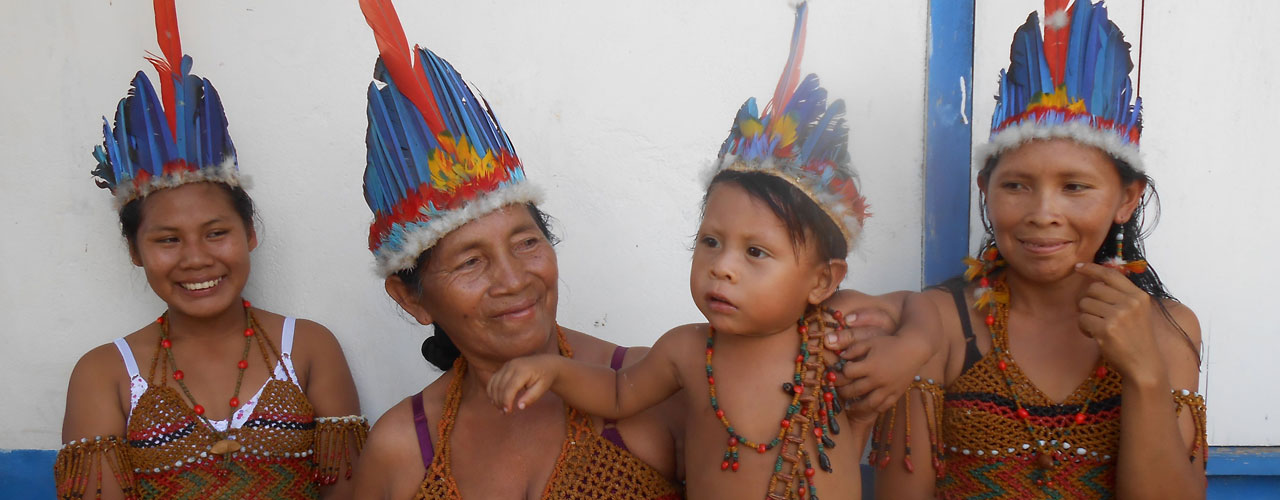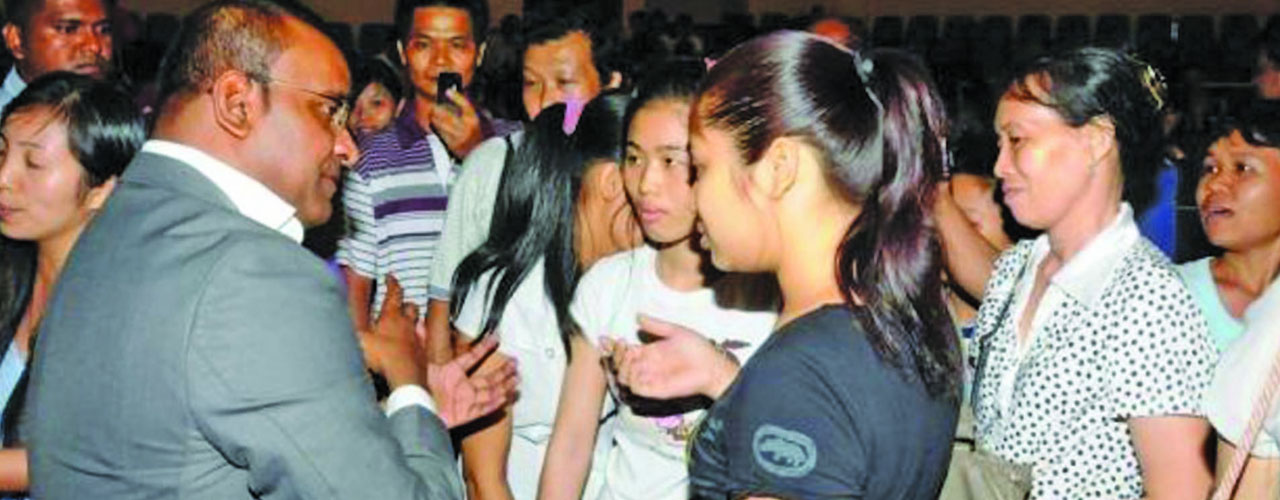



There
were many more Amerindian nations in the
pre-colonial period than those that
exist today. These include the Trios,
Tarumas, Miyonggongs, Piyanogottos,
Atorads, Taurepang, and Kamarakoto among
others. Many of these groups became
extinct or fled Guyana for a number of
reasons; some died from illnesses
contracted through European contact,
some were exterminated by warring enemy
nations, some fled to neighboring lands
during the era of tribal wars, and
others migrated to Brazil at the behest
of European missionaries. A great many
also left because they resented colonial
rule that allowed 'free nation' status
to some and categorize others as slaves.
The so-called "free nations" were the
Arawaks, Akawaios, Caribs and Warraus
and the Dutch colonizers permitted them
to enslave all other Amerindians groups.
It was by this route that the first
slave plantations operated during early
colonization. Amerindians were
immediately accessible and by
establishing a system to enslave them,
and using their own people to make this
possible, the Dutch were able to
institute a structure that would last
for generations.
Later, after
enslaved Africans became the choice of
labor for the plantations, Amerindians
provided invaluable assistance to the
Dutch by helping to quell slave revolts
and by recapturing runaway slaves. The
also maintained security in the interior
and contributed to making Guyana
possible be defining the geographical
boundaries we know today.
The
population of Amerindians in Guyana
stands at approximately 70,000. However,
this figure is difficult to verify
because members of the various
communities travel frequently between
neighboring countries and also create
satellite communities close to and far
from established villages.
Guyanese Amerindians can be categorized
linguistically and anthropologically
into three main human and language
groups which are Arawakan, Criban and
Warrauan. Each of these nations has its
own langue and they are defined
linguistically by the same categories.
They also occupy relatively well-defined
separate ecological niches that have
influenced their distinct cultures.
On
May 3, 1835, the ship Louisa Baillie
docked in Demerara with forty immigrants
from Madeira onboard, bound for work on
British Guiana's sugar plantations. They
came in response to the approaching
abolition of slavery and subsequent
labor shortages.
However, by
1845, most of the Portuguese had moved
off the plantations and had bought small
plots of land and moved into the
huckster and retail trades.
In
the early years, it was mainly in the
rum trade that the Portuguese made their
mark. By 1852, more than three quarters
of the country's retail rum shops were
owned by the Portuguese and they
retained that monopoly well into the
20th century. The end of the 1860s and
the 1870s saw the Portuguese well
entrenched in the business community.
Apart from being property owners, they
were merchants, shop owners, importers,
iron mongers, ship chandlers, leather
merchants, boot and shoe makers,
saddlers, coach-builders, timer
merchants, brick makers, cattle owners,
pork-knockers, charcoal dealers, bakers
and photographers.
In 1858, the
number of Portuguese in British Guiana
was approximately 35,000, of which
almost all were Catholic. They brought
not only the agricultural expertise but
their fait as well. In 1861, they built
the Sacred Heart Church in Georgetown as
well as other churches along the East
Coast and East Bank, in Demerara and
Essequibo.
The Portuguese held on
to their language throughout the
nineteenth century and a number of
Portuguese newspapers kept the community
in touch with events in Madeira and in
the colony. Portuguese schools were
established for both boys and girls,
Together with other amateur and
professional groups the Portuguese
entered the cultural stream of music and
drama in British Guiana society.
The Portuguese were also prominent in
the world of sports - boxing, cricket,
cycling, rugby, football, tennis,
hockey, racing and rowing. In 1898, the
Portuguese formed the first cycling
club, The Vasco da Gama Cycling Club.
By the turn of the century, the
Portuguese had created their own middle
and upper classes, but they were never
accepted into the echelons of white
European society, even though they were
European. The rapid economic progress of
the Portuguese, their strong adherence
to the Catholic faith and their
clannishness bred respect but never
whole-hearted acceptance among the
population in either the 19th or 20th
centuries. In the 1960s and 70s, the
Portuguese suffered even more
discrimination and many left Guyana in
search of greener pastures.
A walk down any
business street of shopping center in
Georgetown would bring you into contact
with "local Chinese". These are the
descendants of the original Chinese who
came to British Guiana as indentured
laborers between 1853 and 1879.
The Chinese brought with them the love
of food and ability to cook, so Chinese
restaurants can be found on almost every
block in the capital and in most country
district. Most of these restaurants are
now run by newcomers from mainland
China. In transporting their culinary
expertise they transform national food
found in Guyana by flavoring them with
rum and ginger. In the case the 'Chinese
cake', the original was the Chinese bean
cake, towsa peng, but with its local
incarnation it was made with black eye
peas. They made ham choy (preserved
greens) with the local mustard plant
that they grew here and salted egg with
the local duck's egg to replace the
hundred year egg. Today, Chinese fare
ahs been taken to new heights with the
establishment of high quality eateries.
The New Thriving chain has become a
place of choice for Guyanese
celebrations.
Over the years, the
Chinese have adapted to the English
customs through churches like St
Saviour's Parish Church, originally know
as the Chinese Church, when it was
consecrated in 1874 as part of the
parish of St Phillip's in Georgetown.
Through the Chinese Sports Club,
which became the Cosmos Sports Club, and
later acquired by the Guyana Motor
Racing Club, Chinese boys and girls
excelled at lawn tennis and table tennis
giving Guyana the West Indies
Championship on several occasions.
Hockey was another popular sport and in
the 1960s and 70s the National teams was
made up almost entirely of players of
Chinese origin.
Through the
British Educational system, members of
Guyana's Chinese community were able to
make their mark as scholars, teachers,
university professors, lawyers, doctors,
dentists, farmers, shopkeepers, business
leaders and political leaders. Many of
the international businesses in Guyana
are managed by Chinese.
The only
Chinese customs that have withstood the
test of time are practiced by individual
families; wedding customs, the
hospitality of the people and the
celebration of any event whatsoever, by
a feast of Chinese foods.